Türkiye is the only country in the world that is located on two continents: Europe and Asia. It is separated by the Bosporus and the Dardanelles Straits. The city of Istanbul is also located on two continents. On the map below, you can see that there are two red dots indicating Istanbul—one on each side of the Bosporus Strait.
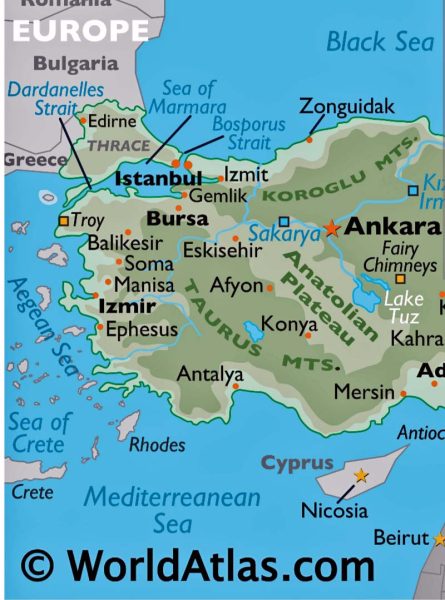
What a treat to be in Türkiye! There’s green grass and blue water instead of tan rocks and sand, and the temperatures are only in the upper 80s. Türkiye is a large country, and we’ve only seen the landscape from the airport to Istanbul (about an hour’s drive), but what we’ve seen is very pretty. Here’s a view of Istanbul by day and by night, looking from one side of the Bosporus Strait to the other.
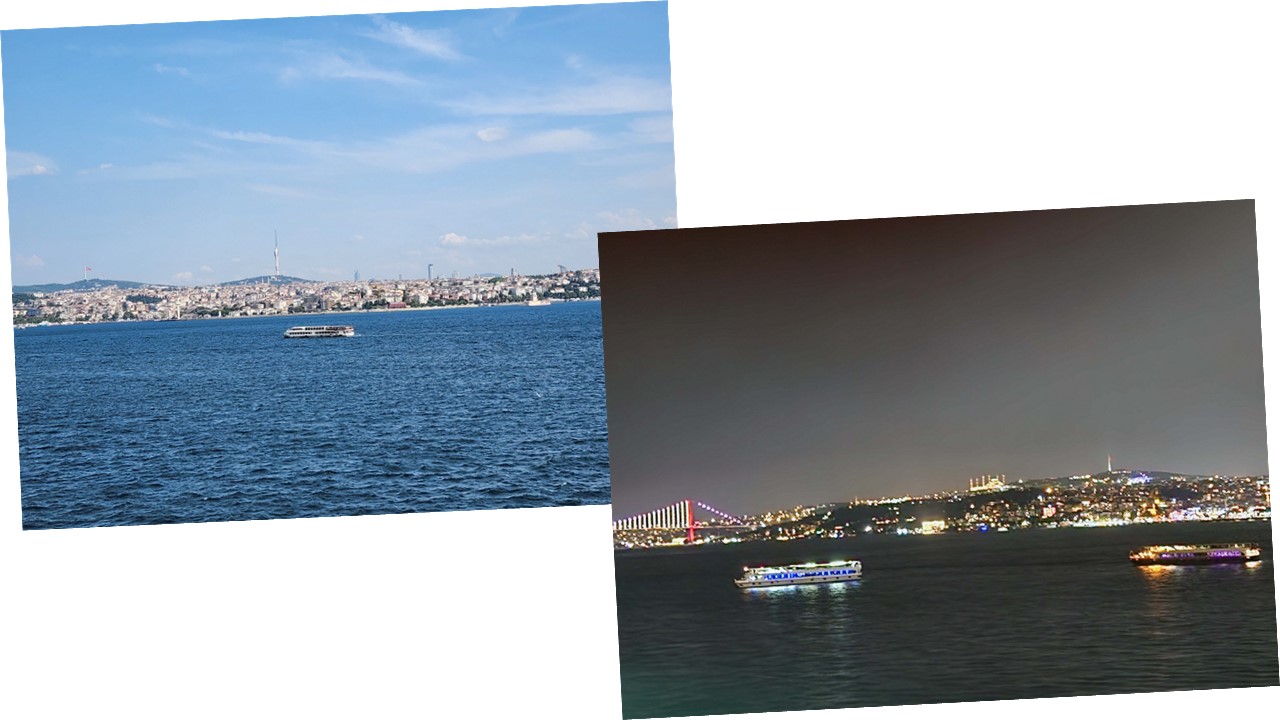
Istanbul is apparently a very busy port for both commerce and pleasure. At one point, as we looked through the Bosporus Strait, Ted and I counted at least 30 vessels in the water within our sight. It was hard to be accurate, because they were all in motion.
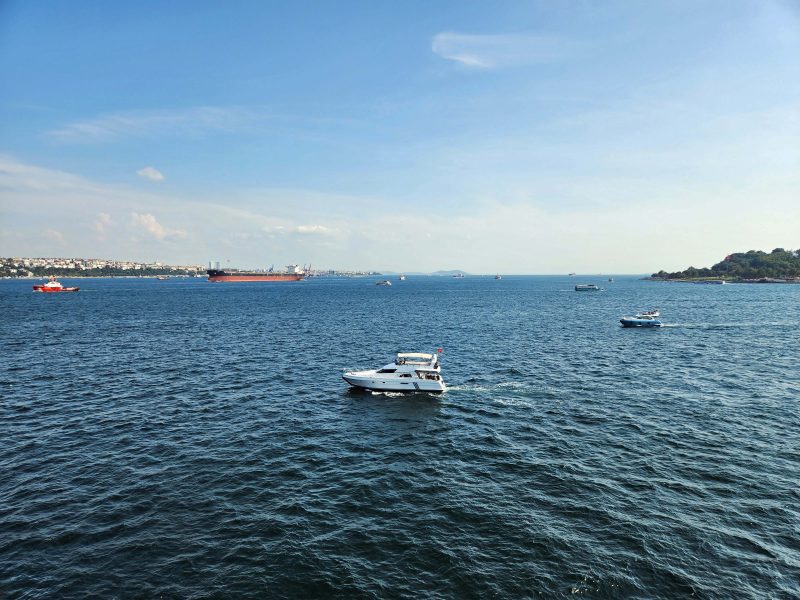
Our first tour stop the next day was the Sultan Ahmed Mosque, also known as the Blue Mosque. It’s one of the most majestic Ottoman mosques and is called the Blue Mosque because of the blue tiles that decorate the interior walls. It also has blue domes.
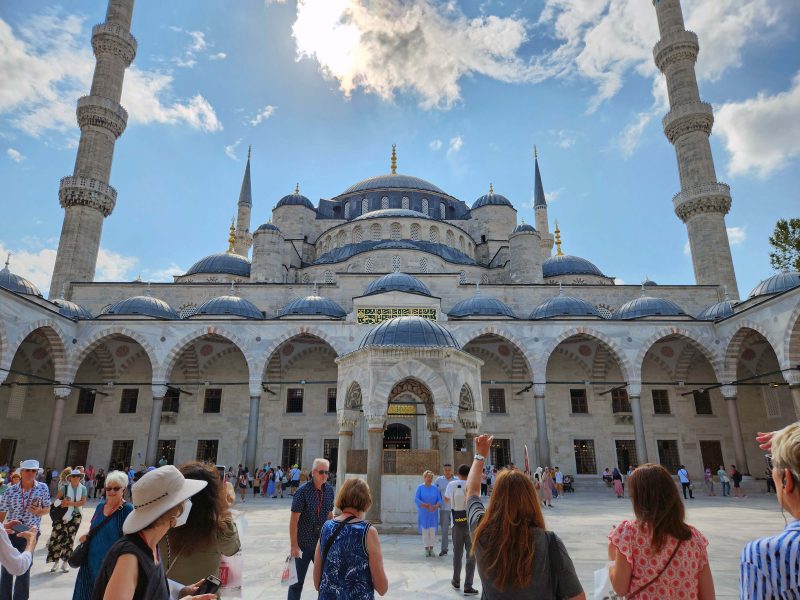
Here are pictures of one of the mosque doorways and the main courtyard with a minaret in the background. The number of minarets signifies the importance of a mosque: one minaret indicates that the building is a mosque; two minarets are decorative; four minarets on four sides indicate a large mosque. The Blue Mosque has six minarets.
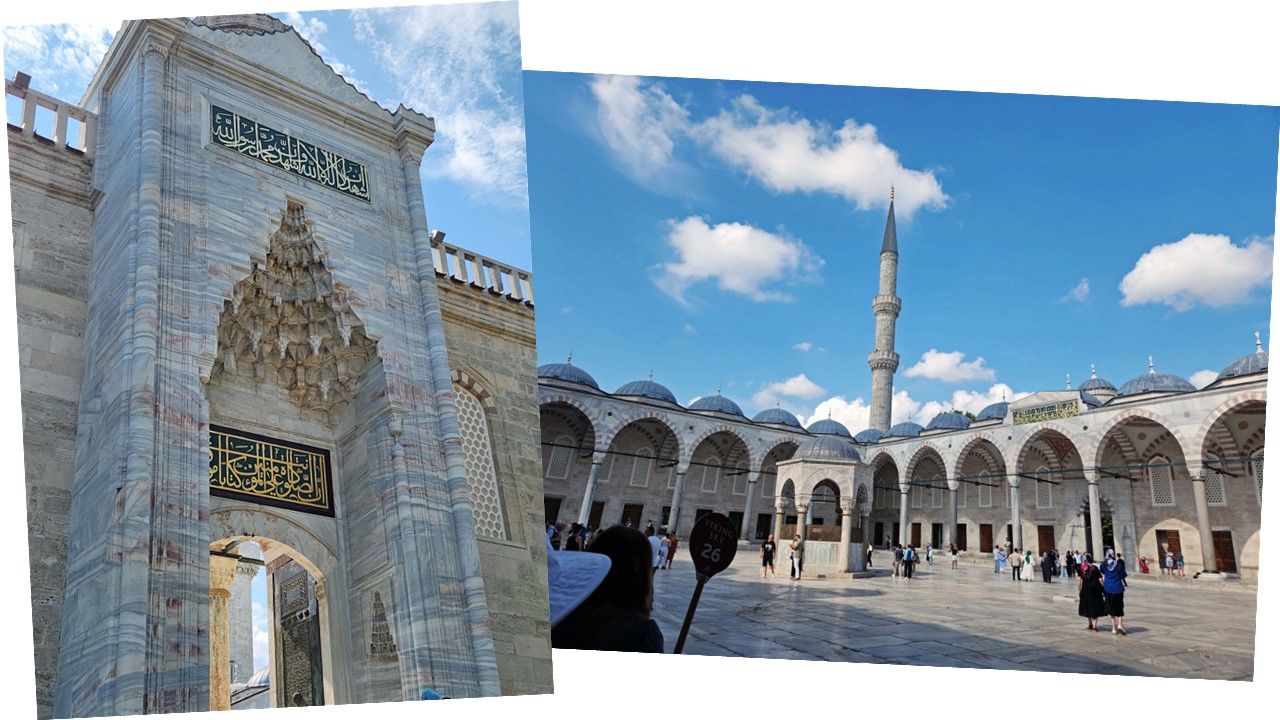
The pictures below show the beautiful interior tiled walls.
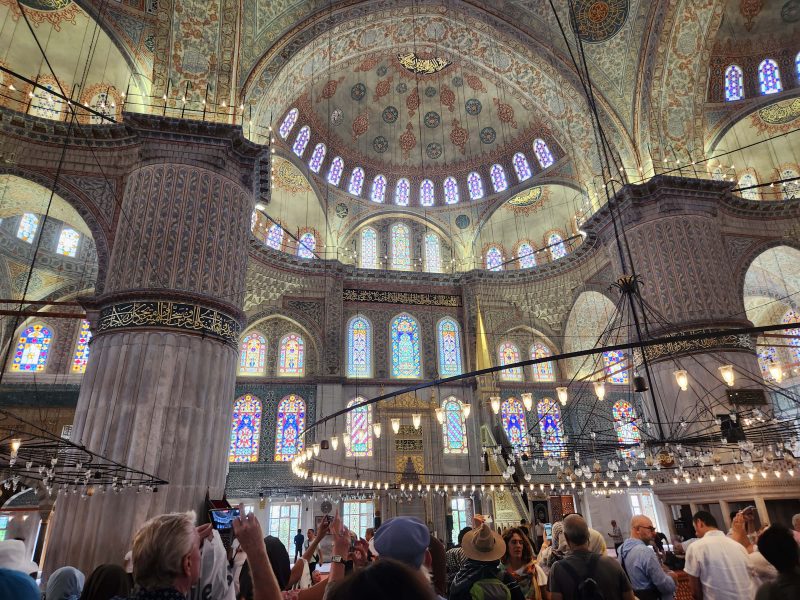

Shoes are not allowed in mosques, so whenever we visited a mosque, we were given paper booties to put over our shoes. Worshippers must wash their feet before entering the mosque. The picture below shows a wudu, or ablution area, for that purpose. The worshipper sits on the brown-topped stool, rests his/her feet on the table against the wall, and then washes them with water from the spigot above the table. This is part of an Islam ceremony of purity and cleanliness before worship. It is traditional for Muslim men and women to pray separately either in different parts of a room or in different rooms.

After our time in the Blue Mosque, we walked about three-quarters of a mile to the nearby Topkapi Palace Museum. Along the way, we walked down the avenue of trees shown below. Aren’t those trees unusual? No one I asked (including Google) knew what species of tree they are. The best I got from Google was “photo at Topkapi”; everyone else just said, “I don’t know.” Given the light bark, maybe they are some kind of poplar.
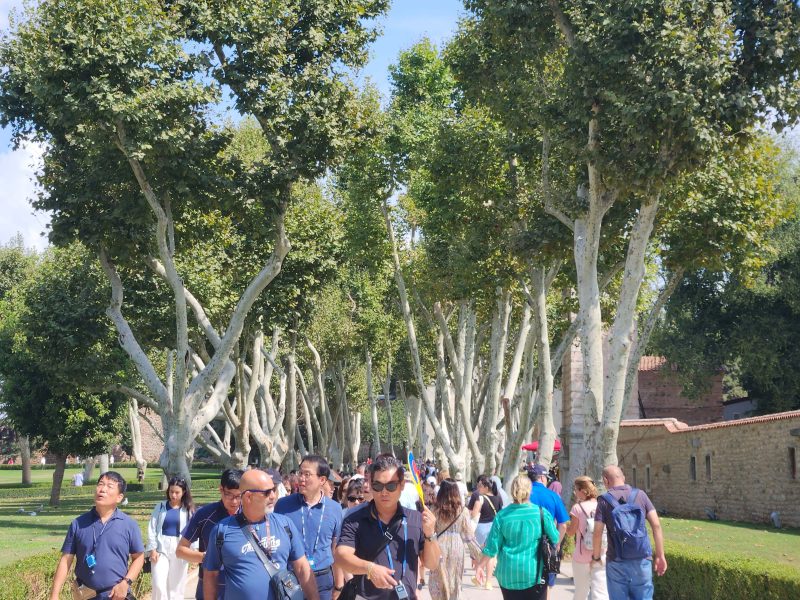
The Topkapi Palace (below, left) was built in 1465 and originally served as the administrative center of the Ottoman Empire and as the primary residence of its sultans. It has four main courtyards, hundreds of rooms and chambers, and many smaller buildings within its walls. The photo on the right shows the Gate of Salutation, which leads to the second courtyard. In 1923, a government decree transformed the palace into a museum.
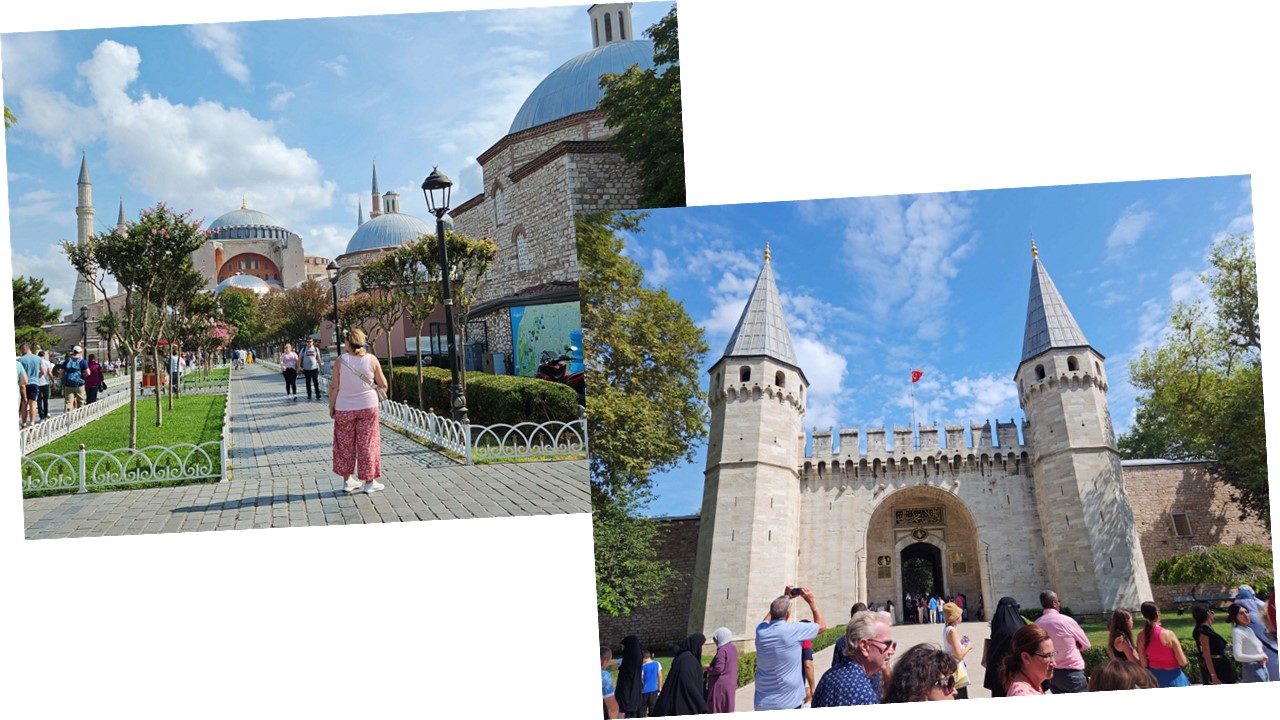
The museum is a popular place and was very crowded. Ted and I only went through two rooms—the armory and the jewels—before we decided to leave the hot, crowded building and walk around the grounds a bit before joining some of our fellow cruise members in a shady courtyard. Pictures of some of the displays are below.
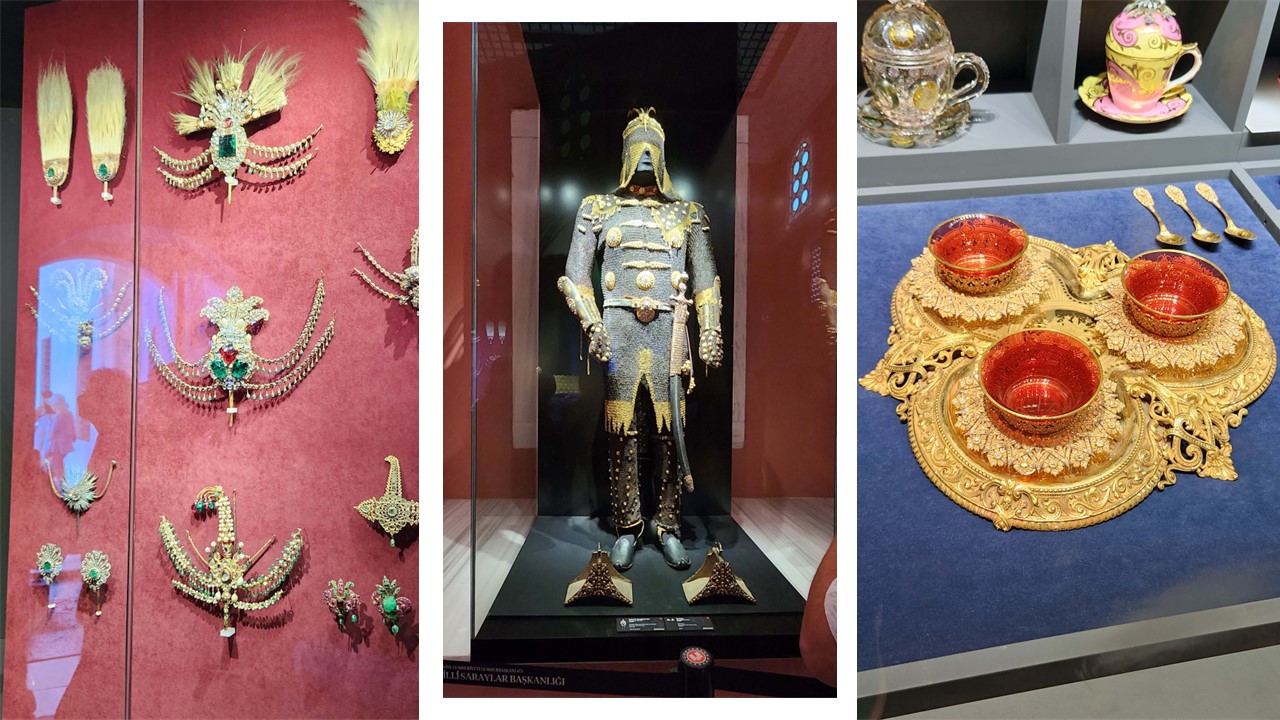
Our last stop of the day was the Grand Market. It was definitely grand! There were four long wings like the one pictured below. The bazaar featured leather goods and jewelry, although there were a few shops offering other items.
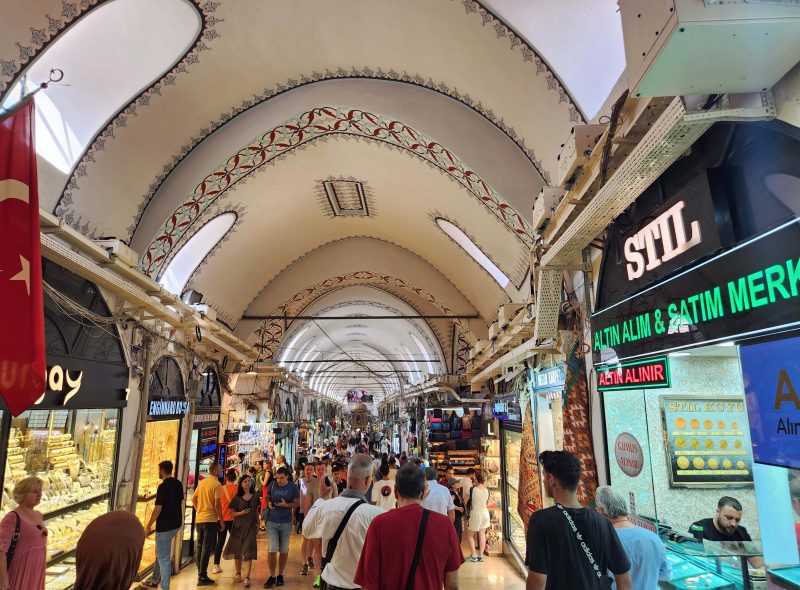
I didn’t personally touch any of the leather goods to determine their quality, but from the appearance of the jewelry displays (definitely not Tiffany!), I doubt if it was high-quality leather. As in Aswan, if we paused to look at the merchandise, a vendor was instantly at our side, coaxing us to come into the store.

The evening entertainment onboard our ship, the Viking Sky, was Turkish folk dancing (left) and whirling dervishes (right). A dervish is an initiate of the Sufi Muslim religious order who has taken vows of poverty and austerity. The whirling is part of a Muslim ceremony to glorify God and to seek spiritual perfection.

The dancers were very good, but they weren’t as much fun as the whirling dervish who performed onboard our Nile River cruise ship. When he finished his performance, he folded his decorated skirt into a bundle the size of a newborn and handed it to a young woman who than carried it around the room so that each of us could look, touch, and/or hold it. I did all three and it was heavy!!—maybe 15-20 pounds. Enjoy the video below. I don’t know why I stopped recording when I did, but I wish I’d continued a little longer. It has music, so turn on the sound.